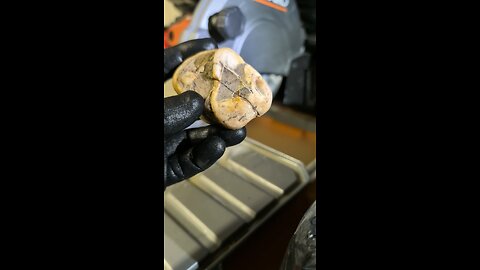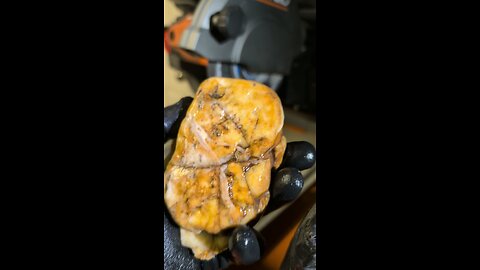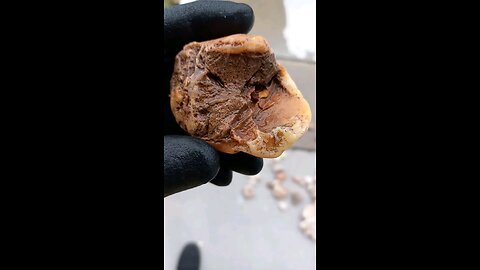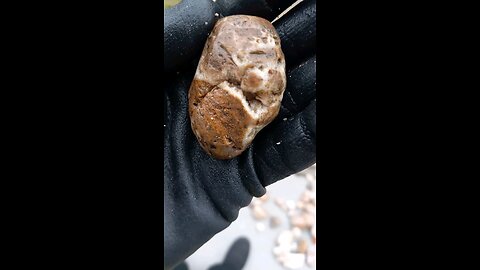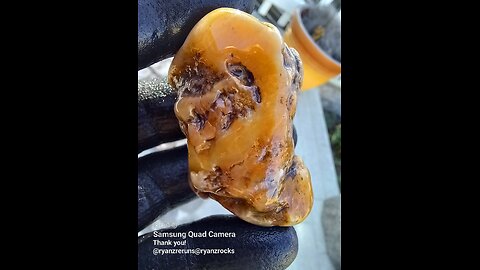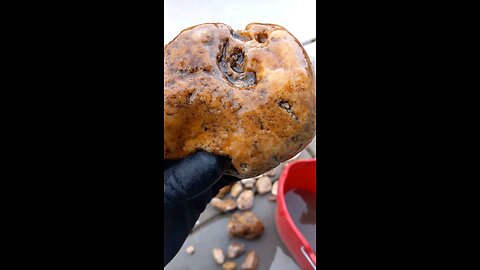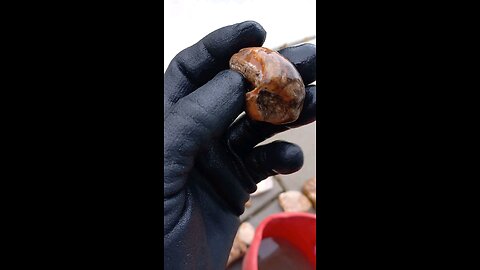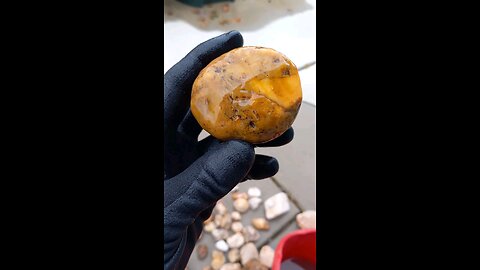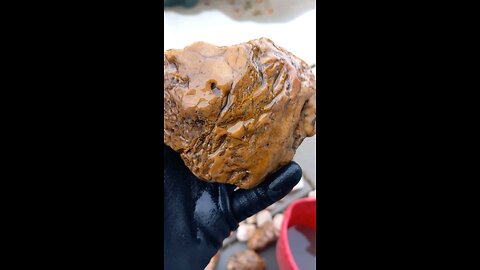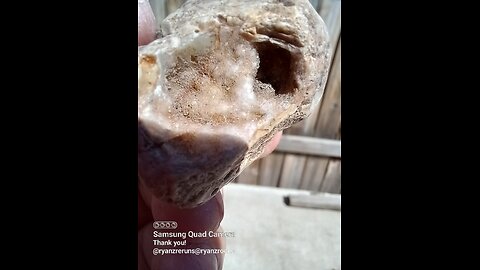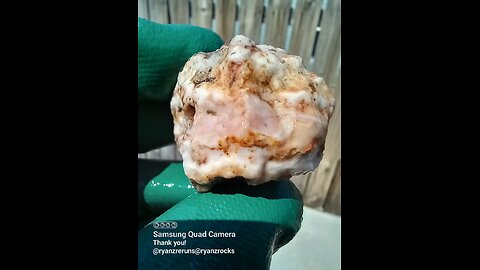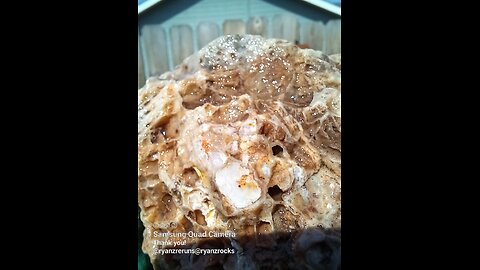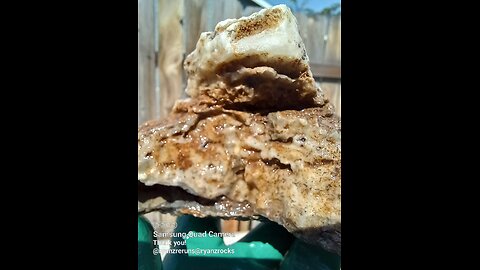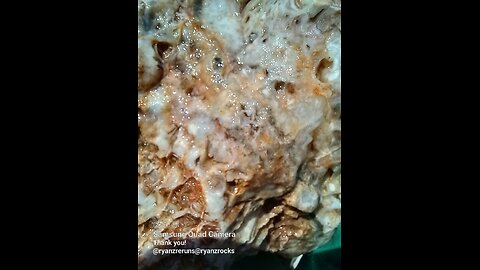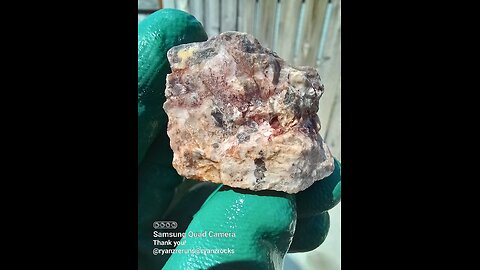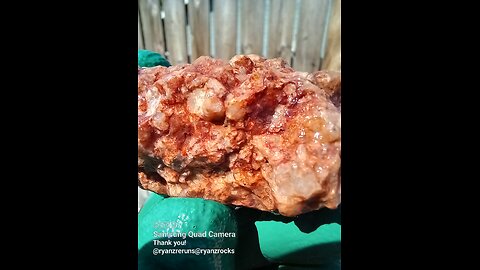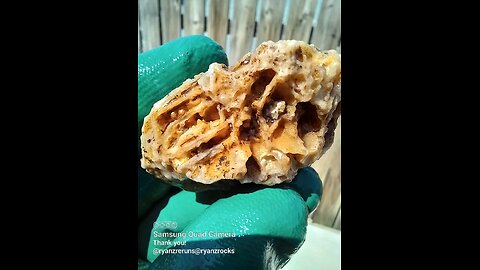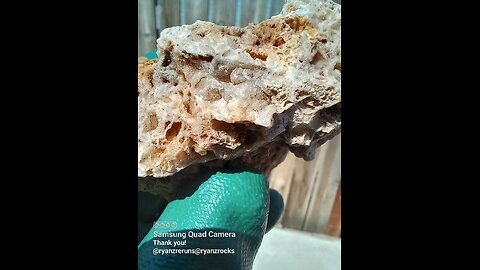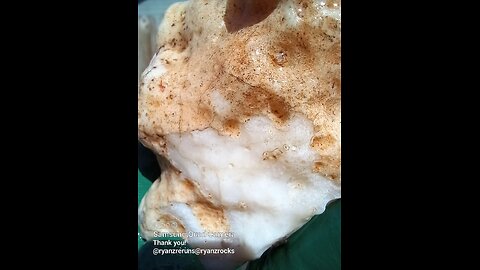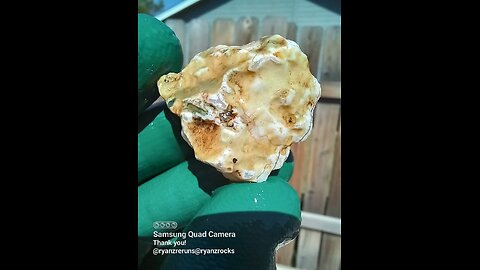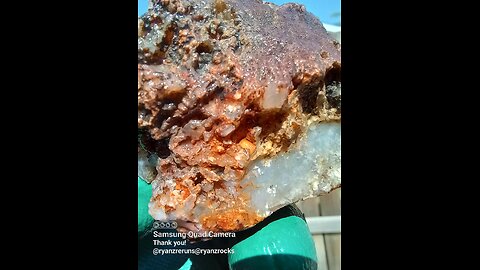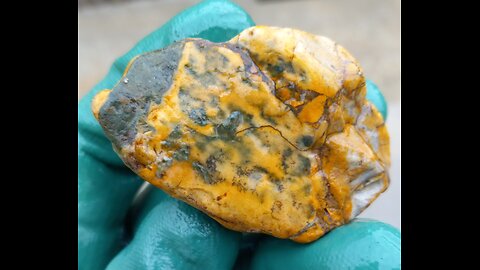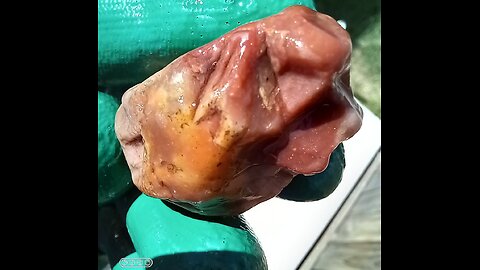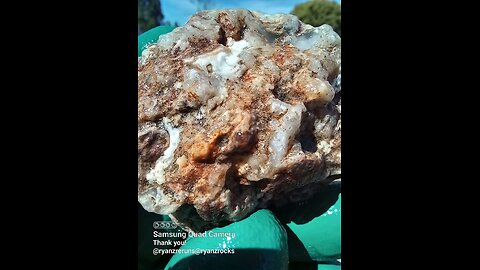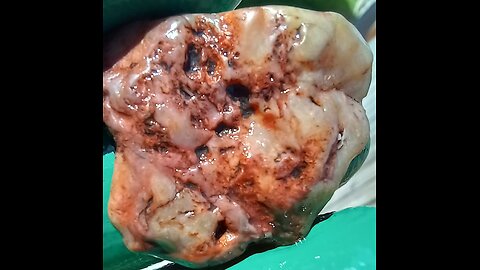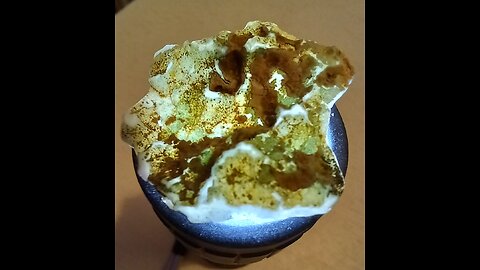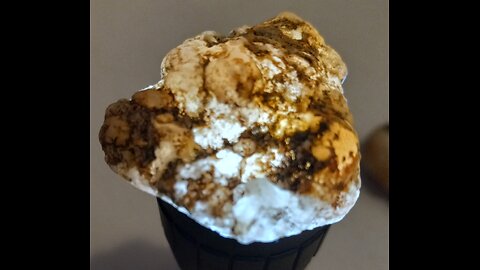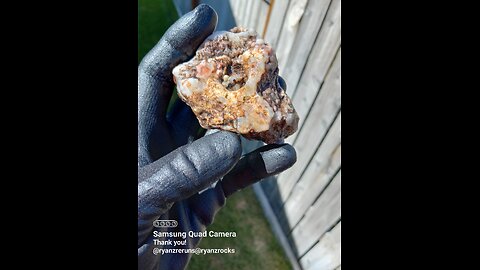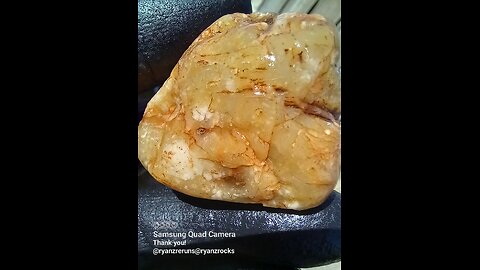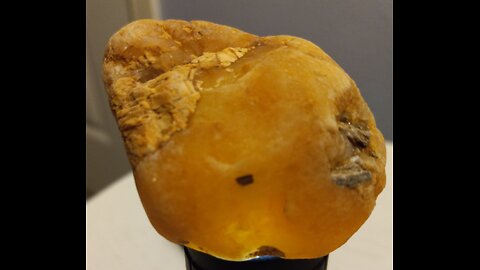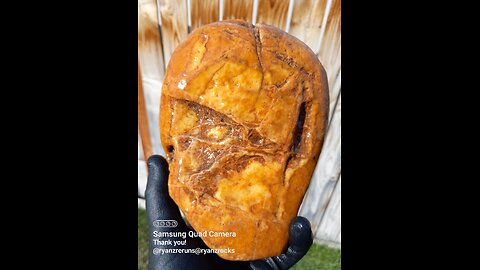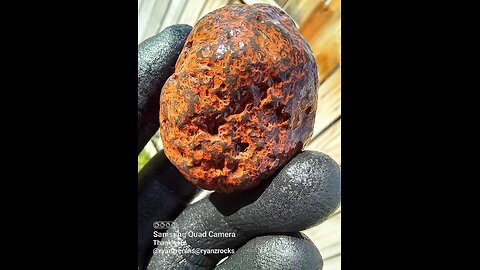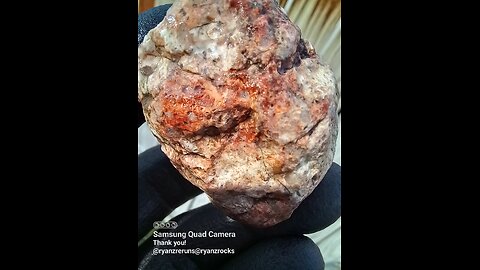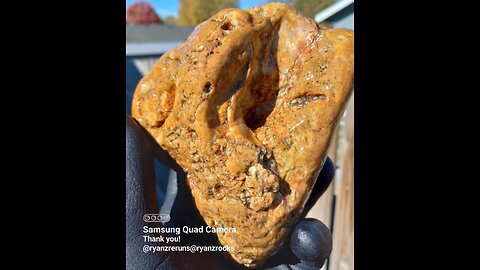Premium Only Content
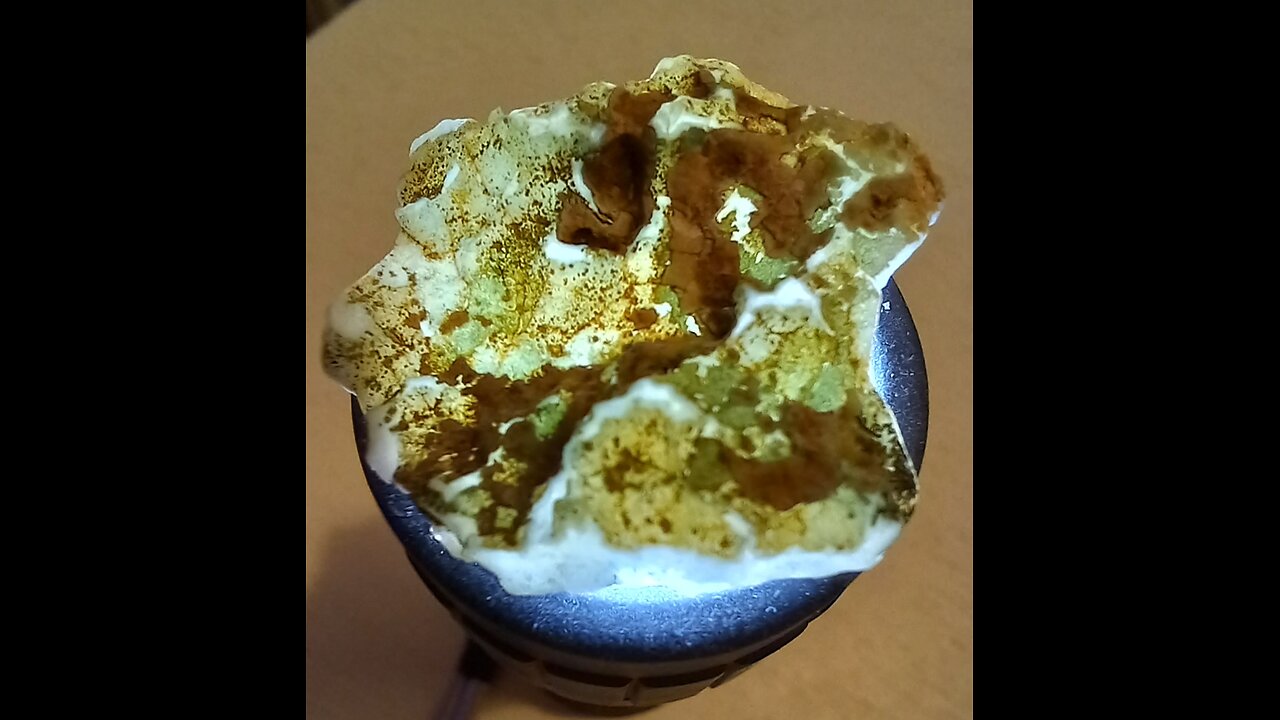
Love the tiny green inside!
Bout' lost a finger on this one!
Big nodule cut!
Broken nodule!
Nodule with crystals!
Carmel Chalcedony Nugget!
Cool Nodule!
Now that's a big gash!
Some botryoidal goins' on!
One 4 cuttin'!
This one got a swirley!
Love the Green!
Spud!
Mish Mash of Agate!
Agate nodule!
Botryoidal chalcedony!
Got a little cave in it!
Smooth Shard!
Purdy Agate Nodule!
Glow Shard!
Nice Glow!
Did you catch the silver flakes?
Bright Orange Jasper Nodule!
Jasper Nodule?
Hot Mess!
Agate Nodule!
Agate Nodule!
Chalcedony Nodule!
Pretty Yellow Glow Nodule!
Big ol' nodule!
Nodule w/ reds!
Pretty red agates nodule!
Another nodule with reds!
Agate Nodule!
Glow Shard!
The rock in the image appears to be a type of chalcedony, possibly an agate or a similar variety. Here's why:
1. **Coloration and Banding**: The rock has a predominantly white or light gray color with some yellowish-brown inclusions. This kind of coloration and banding is typical for agates, which are a variety of chalcedony.
2. **Translucency**: Chalcedony, including agate, often has a translucent quality, which seems to be present in parts of this rock.
3. **Texture**: The rock's texture looks somewhat waxy or greasy, which is characteristic of chalcedony due to its fine-grained silica composition.
4. **Inclusions**: The yellowish-brown areas could be iron oxide or other mineral inclusions, which are common in agates and give them their varied colors. However, without specific tests like a hardness test, streak test, or chemical analysis, this identification remains speculative. For a more precise identification: - **Hardness Test**: Chalcedony has a hardness of around 7 on the Mohs scale, meaning it should scratch glass but not be scratched by a knife. - **Streak Test**: The streak of chalcedony (if it could be powdered) would typically be white or colorless. - **Microscopic Analysis**: Looking at thin sections under a microscope could reveal the mineral composition more clearly. - **Consulting a Geologist or Using Spectroscopy**: For a definitive identification, especially if this rock might be of value or scientific interest.
-
 LIVE
LIVE
TheCrucible
1 hour agoThe Extravaganza! EP: 44 (9/29/25)
15,870 watching -
 LIVE
LIVE
Kim Iversen
1 hour agoSnake Eyes to Charlie Kirk: Is Life Copying this Hollywood Script?
1,159 watching -
 1:39:07
1:39:07
Redacted News
2 hours agoThe FBI's Charlie Kirk assassination story has fully collapsed as new details emerge | Redacted News
109K64 -
 1:15:20
1:15:20
vivafrei
4 hours agoLive with The Blaze's Steve Baker: Jan. 6 Fed-Surrection and Patel's Clarification Adds Confusion!
148K26 -
 LIVE
LIVE
Dr Disrespect
6 hours ago🔴LIVE - DR DISRESPECT - BABY STEPS - TO THE TIPPITY TOP
1,676 watching -
 LIVE
LIVE
Futures Edge: Finance Unfiltered with Jim Iuorio and Bob Iaccino
2 hours ago $1.01 earnedSeptember Surge: What It Means for Q4
115 watching -
 1:41:57
1:41:57
The Quartering
3 hours agoMotive In Church Attack Revealed, Dangerous Walmart Food Kills, Eric Adams Out & More
150K22 -
 DVR
DVR
The Trish Regan Show
2 hours agoBREAKING: NFL Picks Anti-Trump Rapper Bad Bunny for Super Bowl—Risking MASSIVE Fan Boycott!
22.4K8 -
 45:18
45:18
Stephen Gardner
3 hours ago🚨EXPOSED: Real reason Trump preparing for war - Tulsi Gabbard WARNS Trump!!
28.2K37 -
 4:23:04
4:23:04
Right Side Broadcasting Network
9 hours agoLIVE REPLAY: President Trump Participates in a Press Conference With Prime Minister Netanyahu - 9/29/25
106K43

